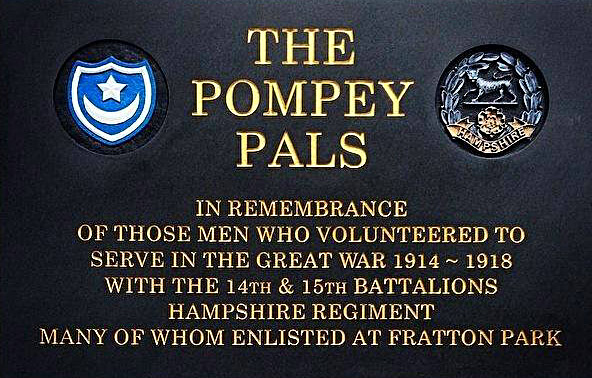Fitzpatrick Institute for the Restoration of Skeletal Tissue Cornerstone
We were commissioned by Professor Noel Fitzpatrick to make this cornerstone, totally in awe of the work this guy does and wish him all the best in his new venture.
About Fitzpatrick Referrals
The Fitzpatrick Institute for the Restoration of Skeletal Tissue (FIRST) is dedicated to rebuilding parts of the skeletal system using stem cell technology married with man-made scaffolds. This revolutionary centre will be the very first of its kind for animals where biology and mechanics will come together at the clinical coalface where it’s really needed to forge a better future for our patients.
For the very first time in the UK, we will provide treatment for osteoarthritis with validated evidence-based stem cell and blood derived autologous treatments. This will create a new standard for the application of regenerative medicine therapeutics where strict protocols are adhered to with regard to quality control, and outcome measures are validated and standardised.
Further information: www.fitzpatrickreferrals.co.uk
Tifosy Crowd Funding Plaques
We were commissioned by Portsmouth Football club to produce and fit name plaques at the clubs newly acquired training ground, each person who bought a plaque paid £250.00 towards the Tifosy crowd funding campaign, there were lots of various ‘rewards’ you could earn by donating money to the campaign, this wall was part of that, in all an amazing £270,000 was raised.
Tifosy
In 2014, Tifosy ran an incredibly successful campaign, raising a staggering £270,000 for Portsmouth FC’s academy. It was the largest football crowdfunding project in the UK.
Portsmouth FC is an incredibly unique club in England, with huge support throughout not only the city but also the country. The likes of Sir Alex Ferguson, Thierry Henry and Ronaldinho have all expressed their admiration for the buzzing atmosphere they experienced at the home of Portsmouth FC, Fratton Park.
Pompey Pals Memorial
We donated these memorial plaques to the Pompey Pals project and fitted them outside Fratton Park, Portsmouth. They were unveiled on 4th August 2014 by the Lord Lieutenant of Hampshire, Dame Mary Fagan.
Pompey Pals
Originally set up in partnership with Portsmouth Football Club to produce a lasting memorial to the the Portsmouth Battalions, the Pompey Pals Project is now a ‘stand alone’ organisation which aims to commemorate all those men and women from the Portsmouth region who served in any capacity during the Great War, whether at home or overseas. We are always happy to hear from anyone who had family members who served during the 1914 – 1918 war.
Further information:
Pompey Pals Official Website – www.pompeypals.org.uk
More about the Pompey Pals – www.hampshire-history.com/pompey-pals
Cockleshell Heroes Monument
The memorial to The Cockleshell Heroes we produced for the Southern Region RMA which stands outside the Royal Marines Museum, Southsea
Cockleshell Heroes
In 1942, Major ‘Blondie’ Hasler led members of the Royal Marines Boom Patrol Detachment (RMBPD) on Operation Frankton. Their task was to canoe 70 miles up the River Gironde to Bordeaux and use limpet mines to sink a number of cargo ships preparing to take the latest German equipment to Japan.
They used the Cockle Mark II canoe for the raid, hence the name of the book and film ‘The Cockleshell Heroes’ which have made the raid famous.
The Royal Marines Office sent out a call for ‘volunteers for hazardous service’, who were ‘eager to engage the enemy’, ‘indifferent to personal safety’ and ‘free of strong family ties’.
The response was not overwhelming as many men in the Corps had already volunteered for Commando service. A total of thirty-four men made up the RMBPD which was formed on 6th July 1942 and based at Lumps Fort, Southsea. From these men, thirteen were chosen for the raid.
Training for the raid started on 20 October 1942. This included canoe handling, submarine rehearsals, limpet mine handling and escape and evasion exercises. They rehearsed with a simulated attack against Deptford, starting from Margate. This involved canoeing through the Swale and up the River Thames.
Operation Frankton
Six canoes and their two-man crews were transported to French coastal waters by the submarine HMS Tuna in December 1942. One canoe was damaged as it was being brought through the submarine’s hatch and could not be launched.
The other five canoes started their hazardous journey. Two quickly capsized in the tidal races at the mouth of the River Gironde. Another canoe sank near Bordeaux, leaving two crews to make the final attack. This resulted in four ships being badly damaged.
Major Hasler and Marine Sparks made it back to England with the help of the French Resistance. They were the only survivors. The two marines whose canoe sank died trying to swim to shore. Four marines were captured by the Germans when their canoes capsized. Another two were captured trying to escape after the attack. All six were subsequently shot in accordance with Hitler’s directive: “All enemy troops taking part in the so-called commando operations…whether in battle or escaping… will be destroyed to the last man.”
Further information: The memorial shown above was unveiled by Lord Paddy Ashdown on 4th November 2012, the 70th anniversary of the raid.
More about the story – www.historylearningsite.co.uk






